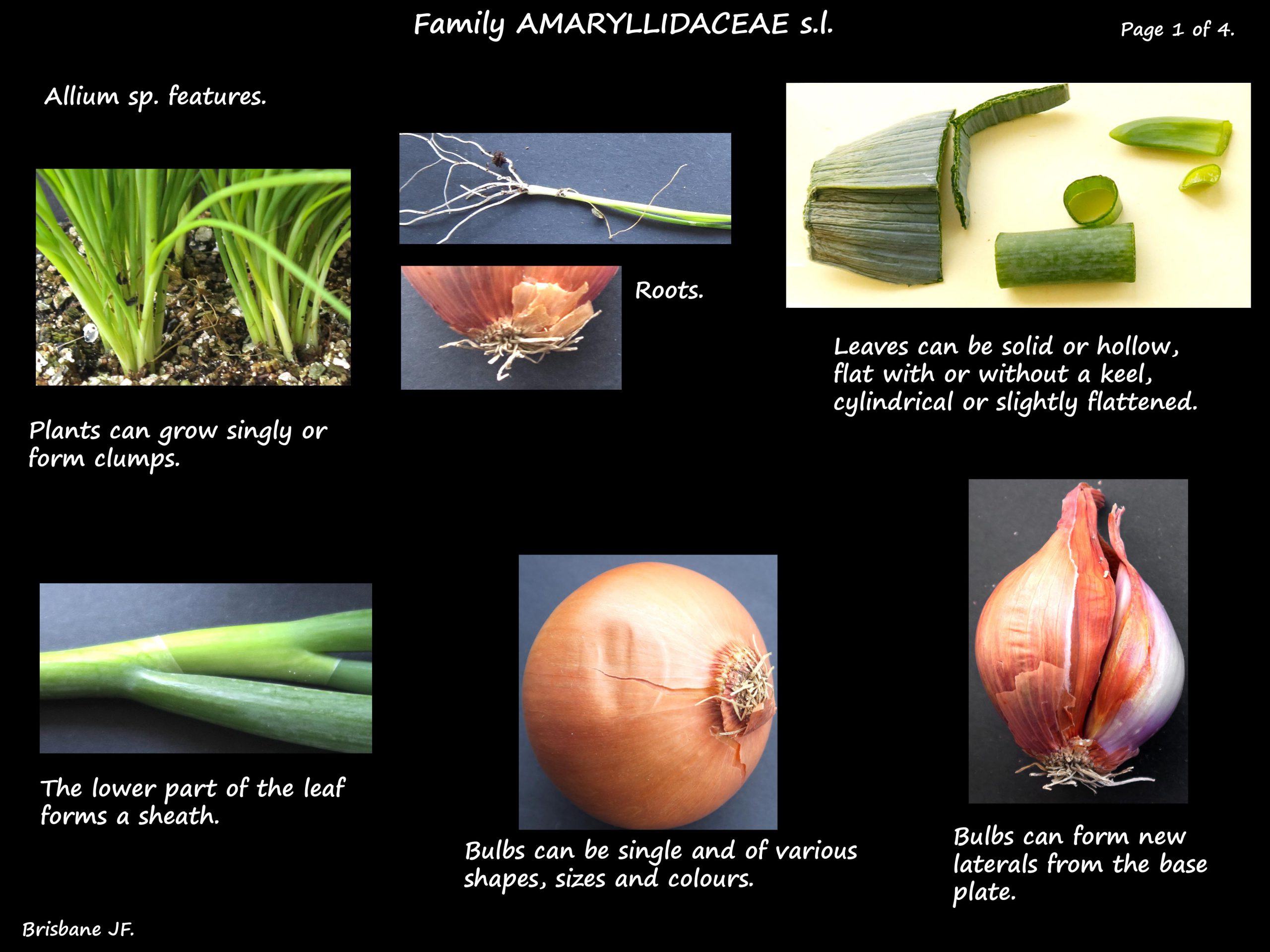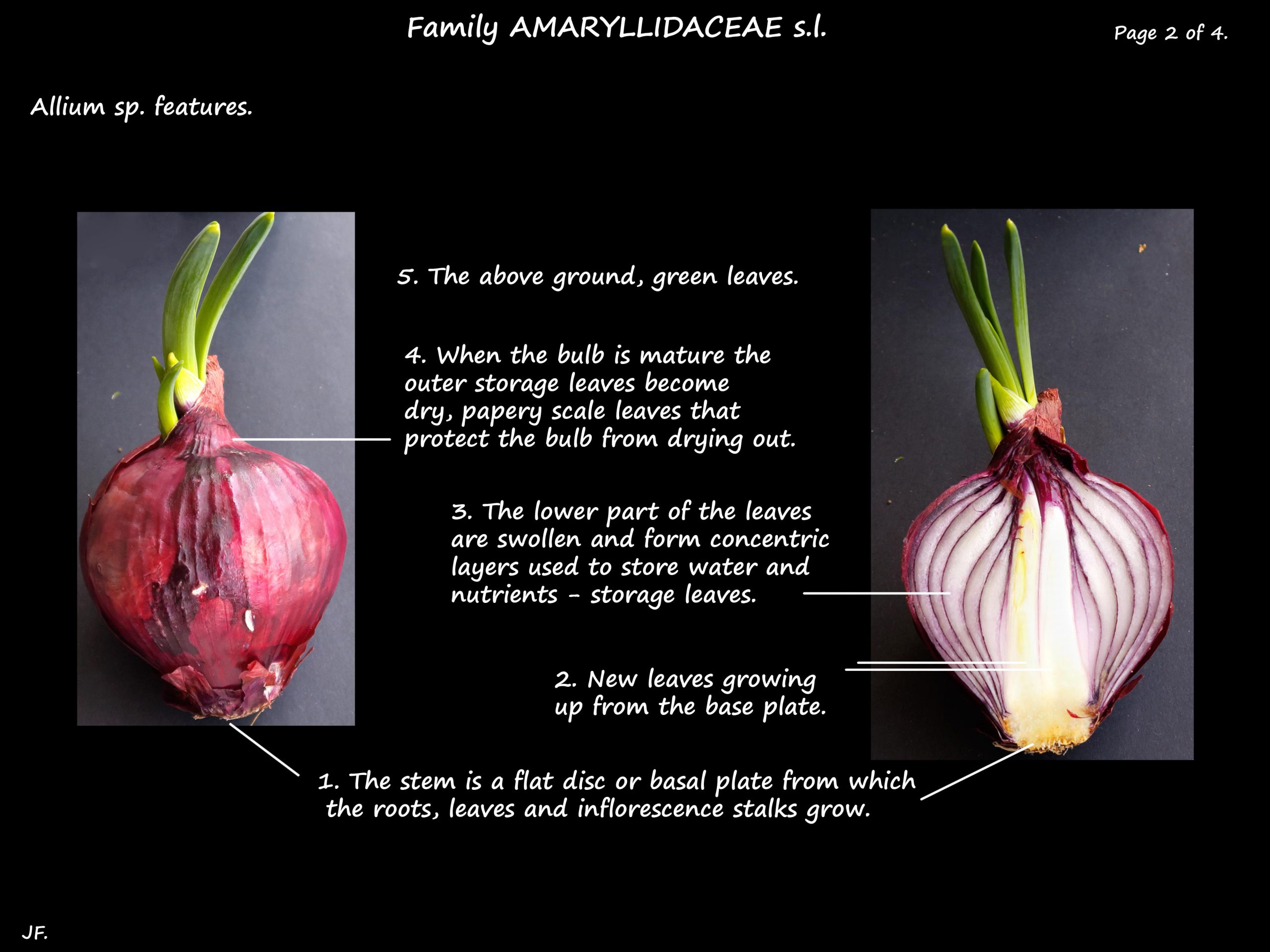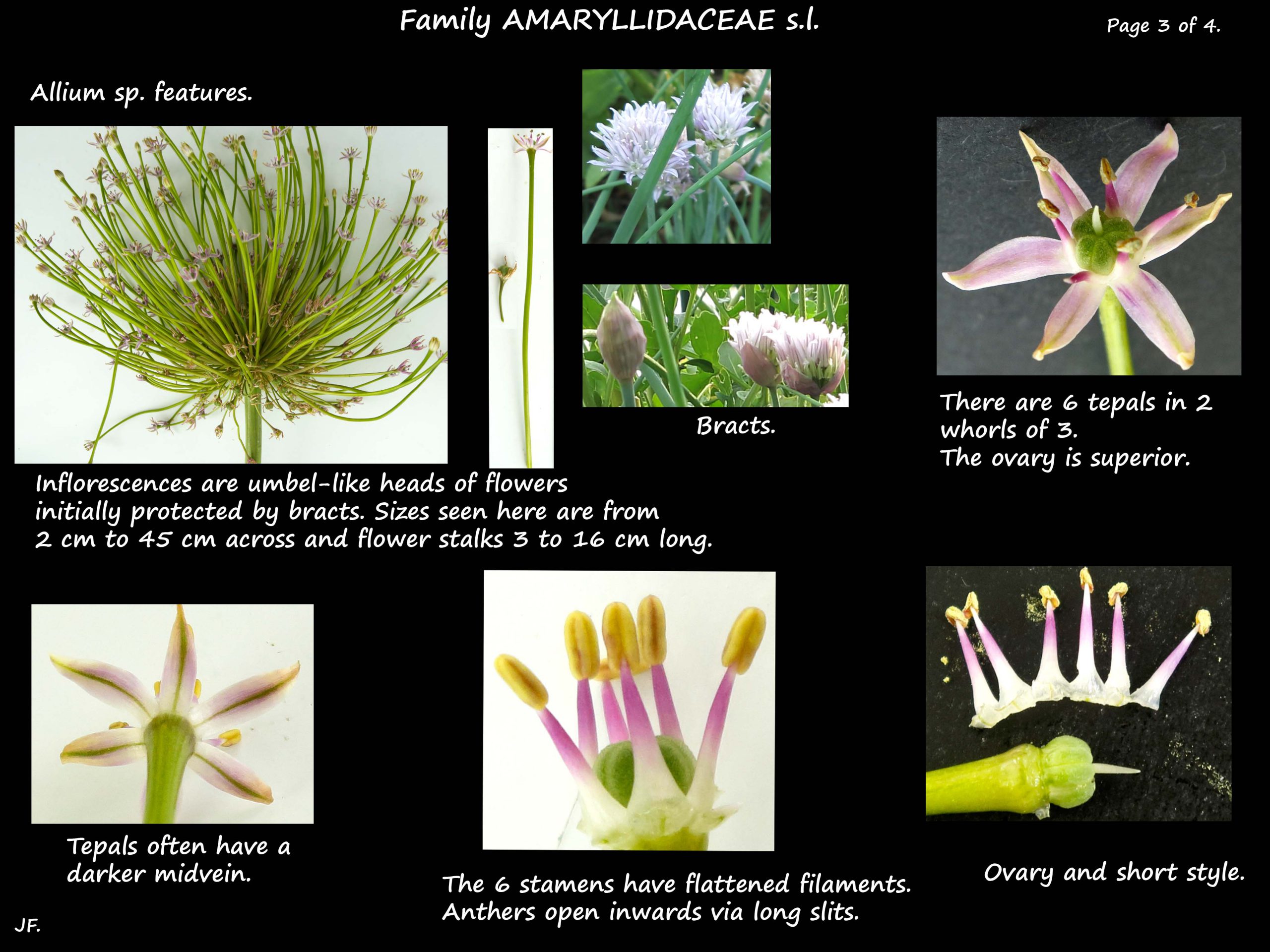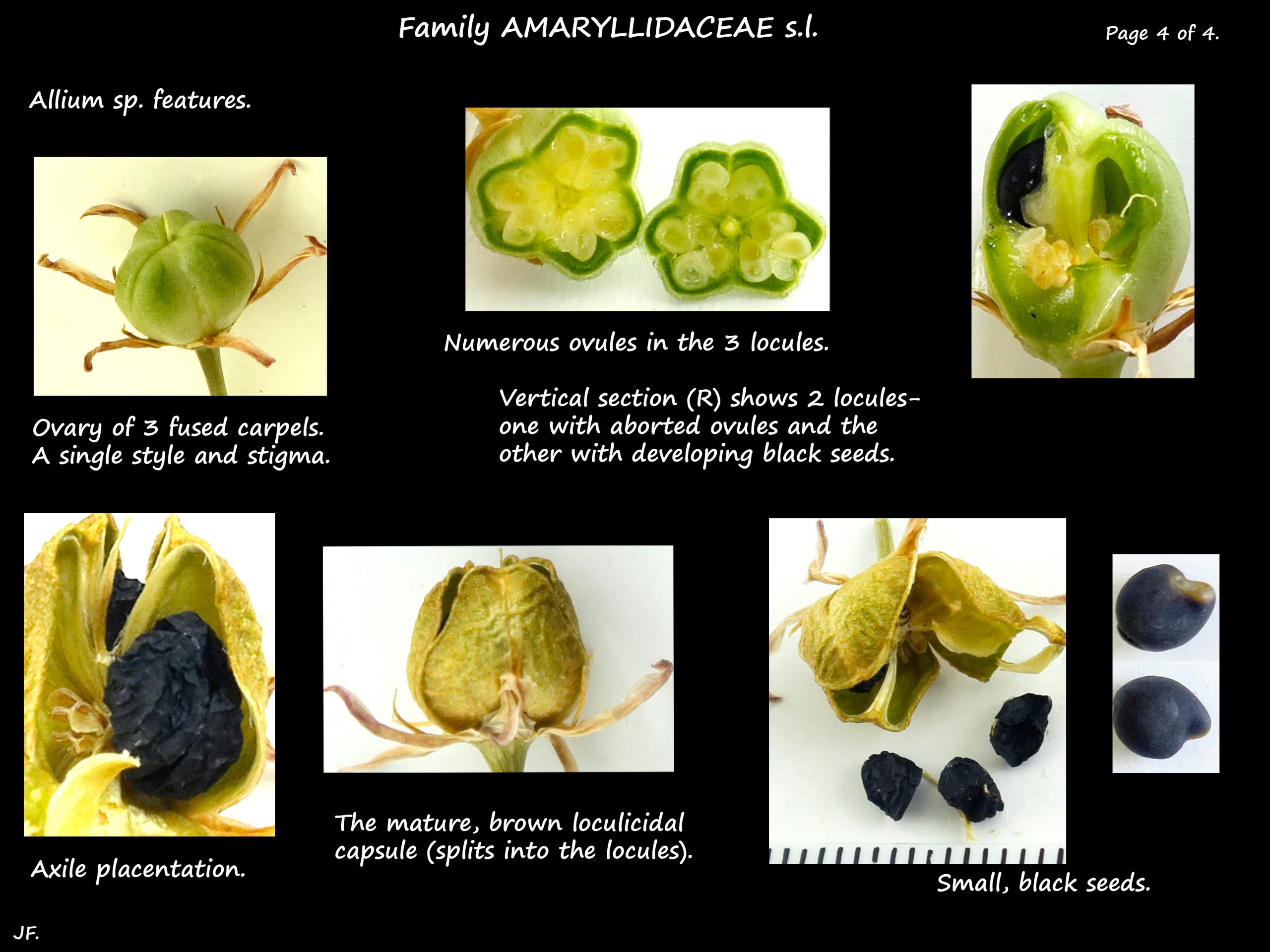Allium – Onions.
Family Amaryllidaceae > Subfamily Allioideae > Tribe Allieae.
Allium is the onion genus and the type species is Allium sativum (garlic).
The number of species is not known with new ones continuing to be found.
Most estimate around 600 to 800 species.
Well known members include the common onion, garlic, chives, shallots and leeks.
There are hundreds of cultivars and hybrids.
They are grown as garden ornamentals or for food.
With so many species there is a wide range in the features.
Leaves and bulbs have an oniony smell and taste due to aliphatic disulphides.
The strength of the aroma and taste varies greatly with the species.
Biennial or perennial plants from 5 cm up to 1.5 m high.
The oldest species have true bulbs but most have bulbs and rhizomes.
Bulbs can be from 2 mm up to 10 cm in diameter.
Bulbs can be single or produce bulbils to form clusters.
New bulbs can be formed from the base of old ones or on the rhizomes.
Many bulbs have a tough outer brown or grey protective coat made of dry scale leaves.
The inner coats are thin and membranous.
There are 1 to a dozen basal spirally arranged leaves without stalks.
Most have linear or strap-like leaves that can be flat or have vertical grooves.
The leafless inflorescence stalks or scapes hold a spherical umbel of flowers at the top.
Spathe-like bracts, often fused, enclose the developing buds.
Flowers, on short stalks are commonly erect with the outer ones opening first.
Bacteoles are present.
There are 6 tepals in 2 whorls and they may be separate or partly fused.
Fowers are bell or tubular in shape and sometimes there is a corona.
As well as white, colours include mauve, yellow, blue, green and purple.
Some species form small bulbils in the flower head.
Nectar is produced from septal nectaries although the amount varies a lot.
The 6 stamens, in 2 whorls of 3, are attached to the tepals.
Filaments are usually flat.
The anthers are versatile, (move freely on the filament).
The anthers open inwards via longitudinal slits.
The ovary is almost always superior, rarely half inferior.
It consists of 3 fused carpels and 3 locules.
Each locule has 2 to many ovules with axile placentation.
There is a single style and stigma.
The fruit are loculicidal capsules containing black seeds.
J.F.





